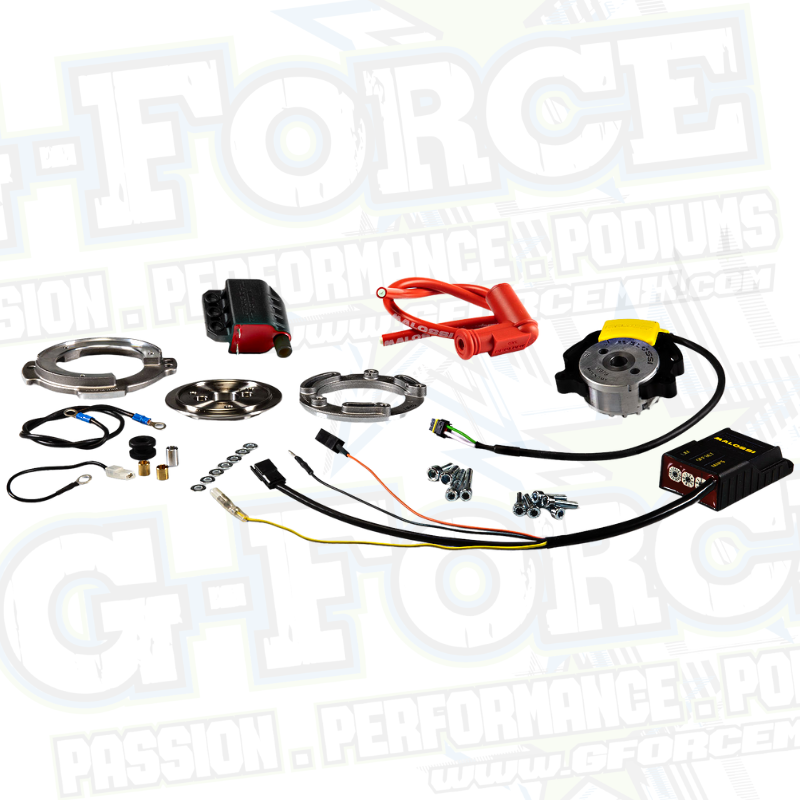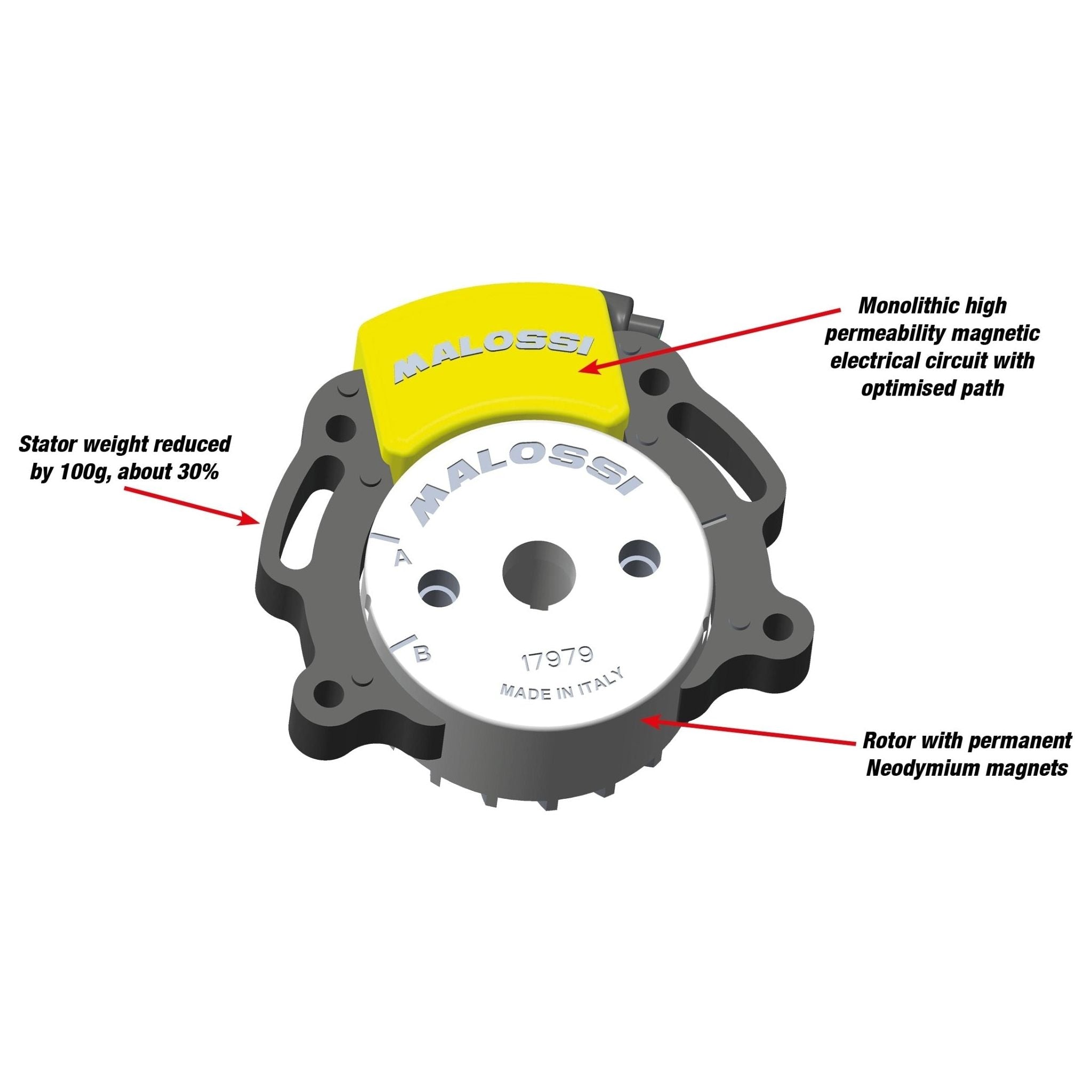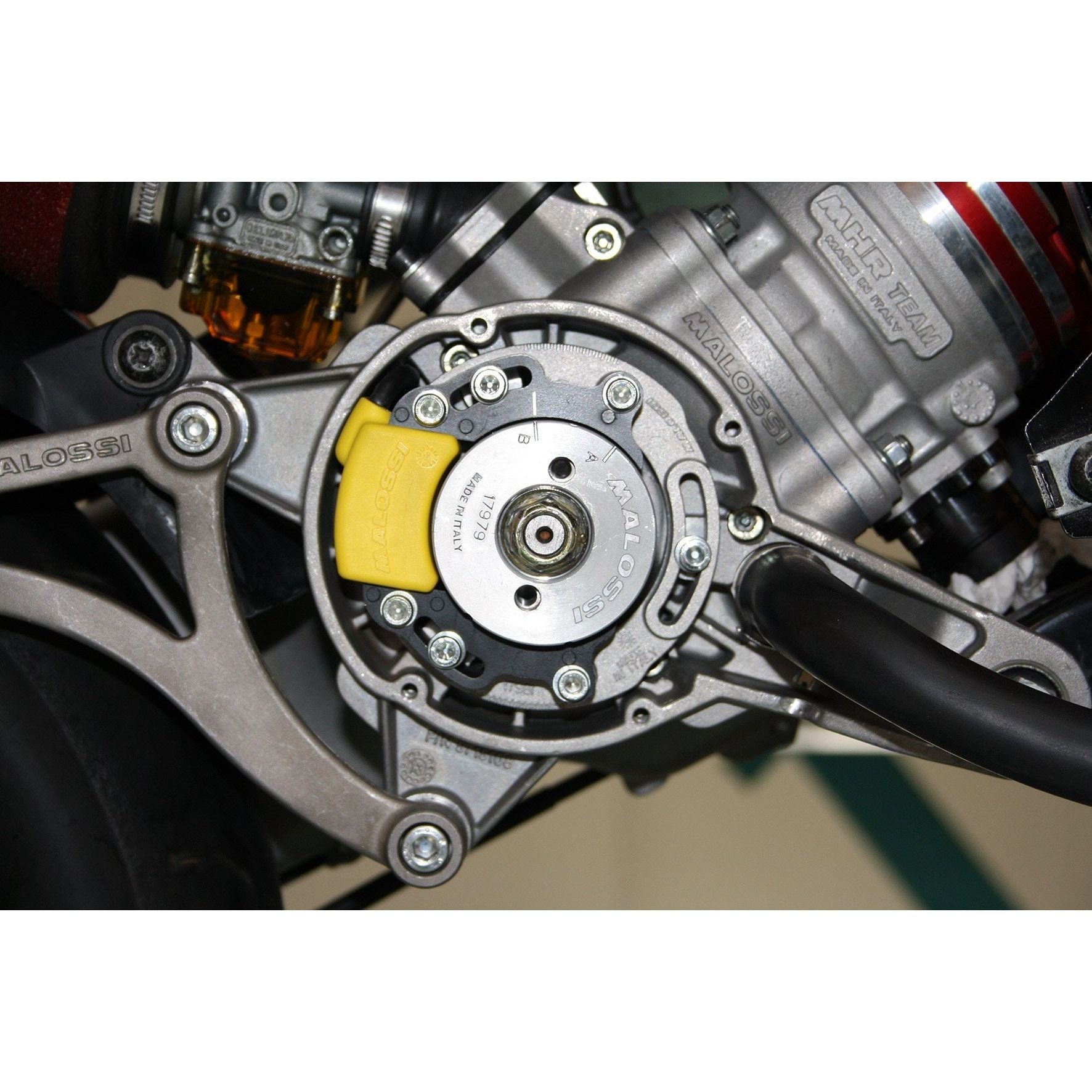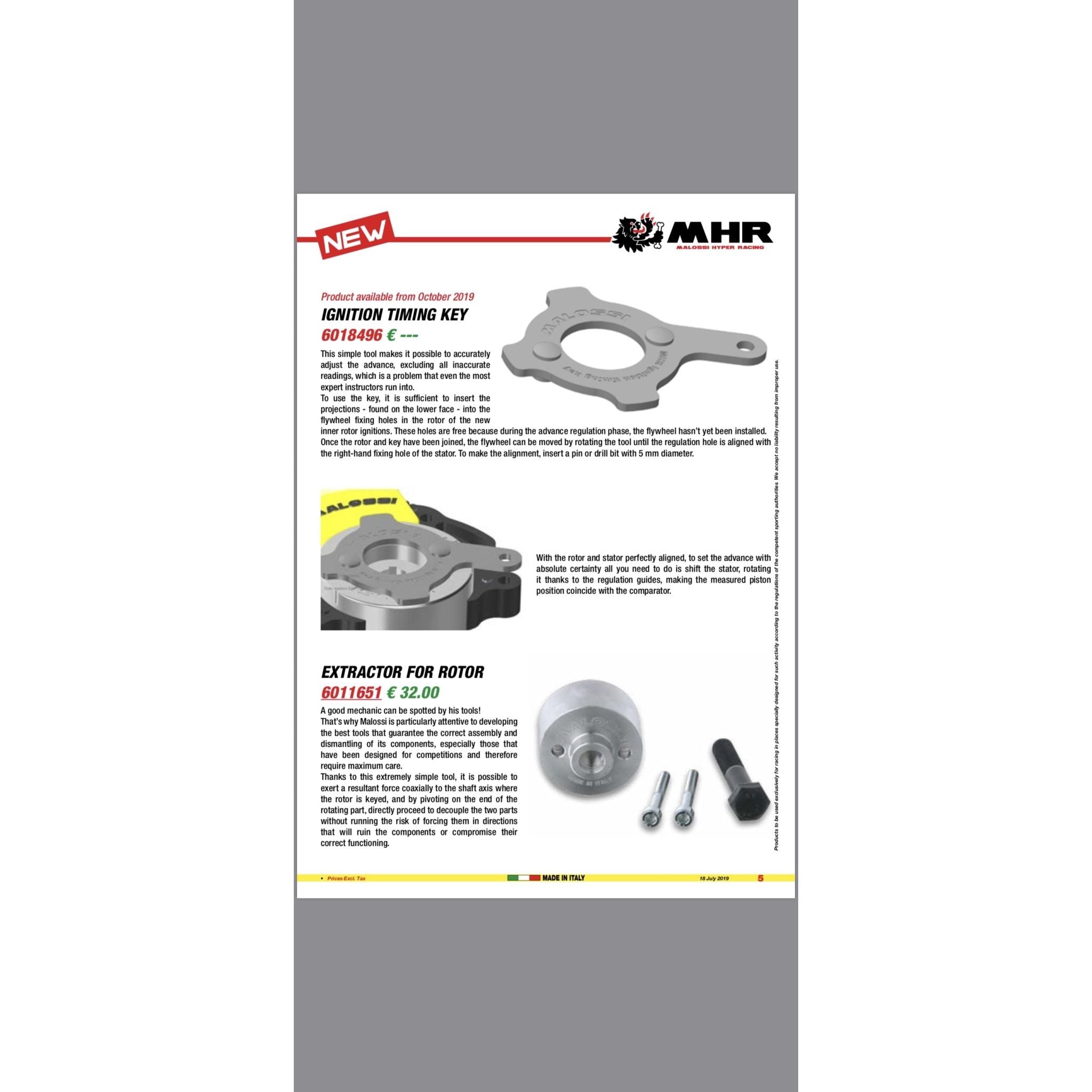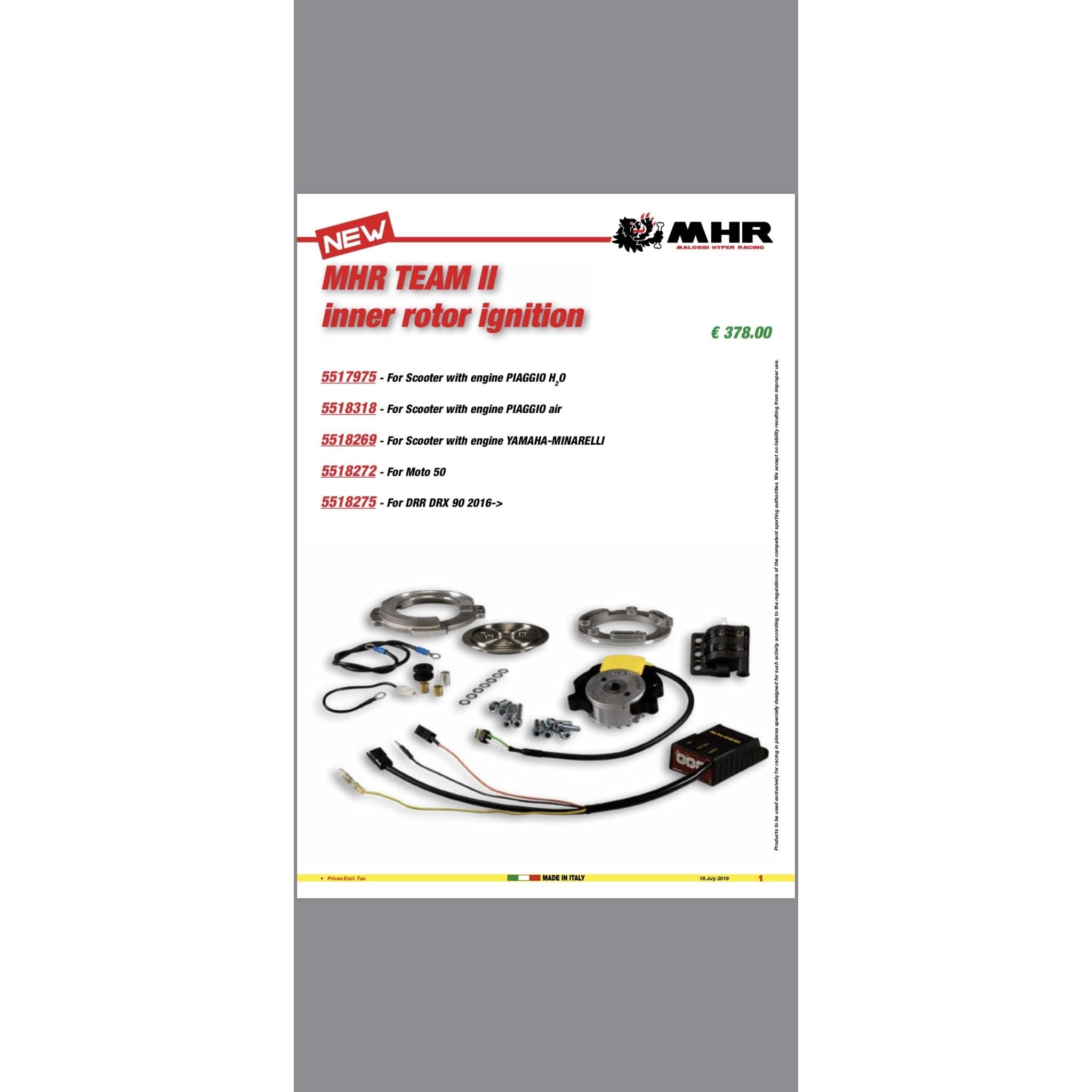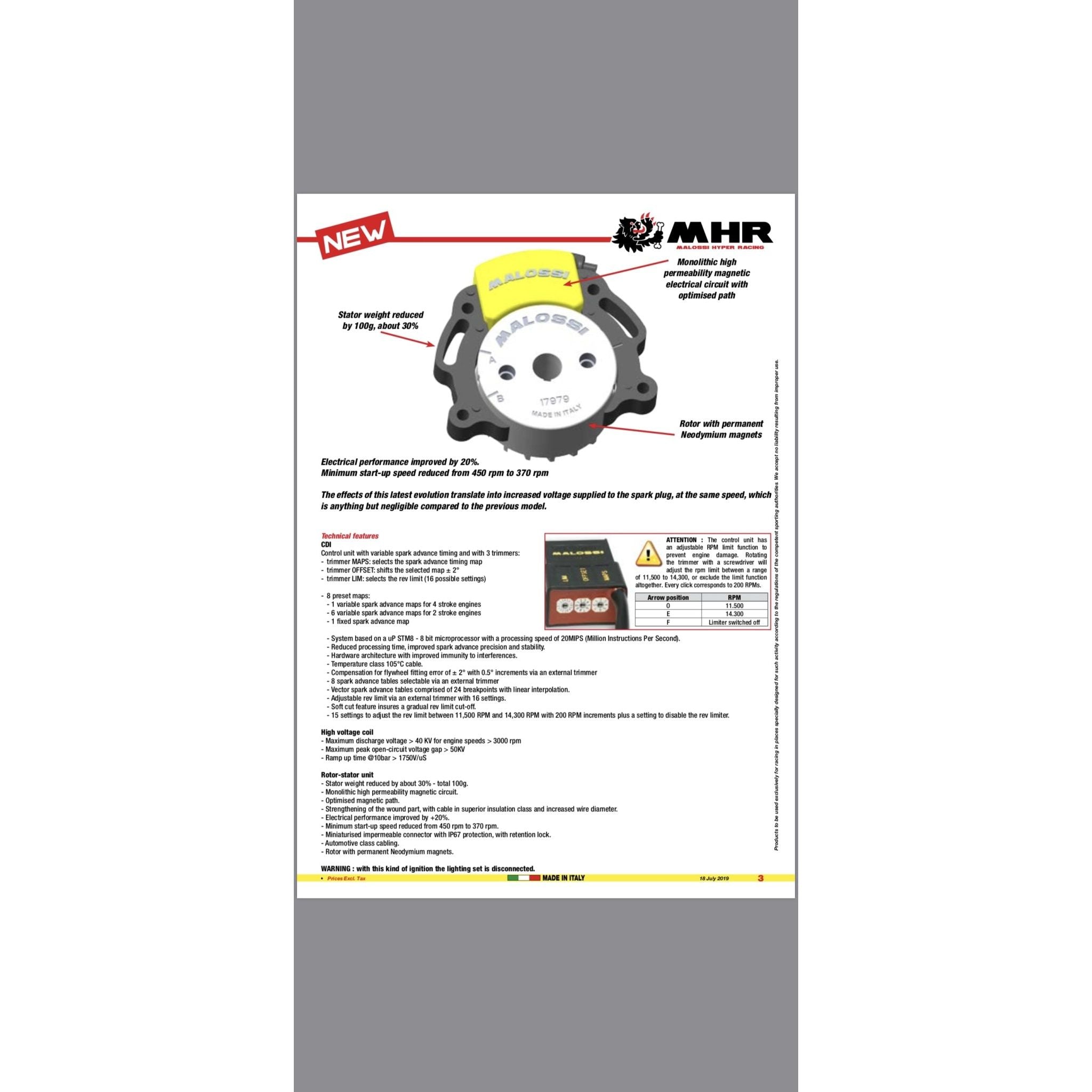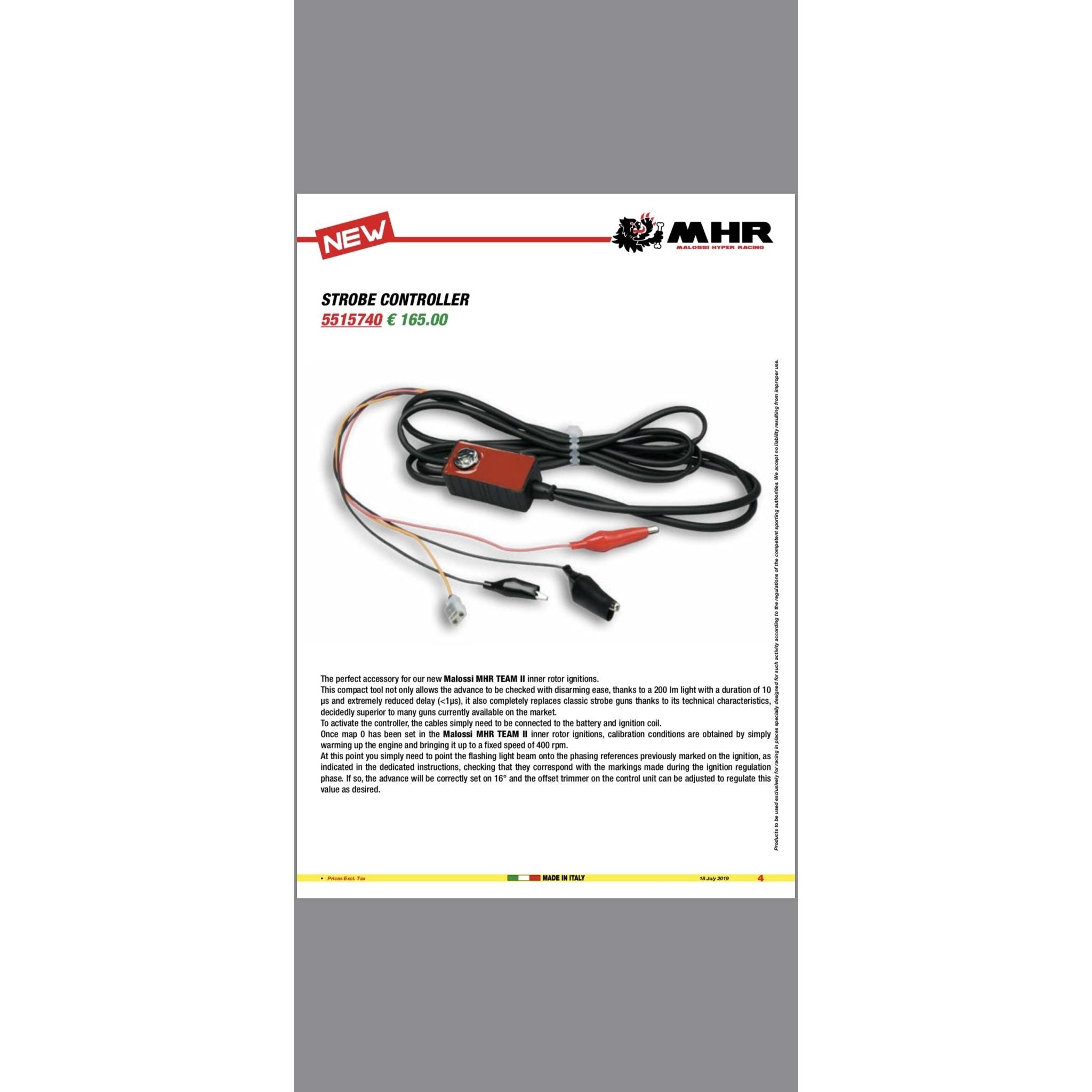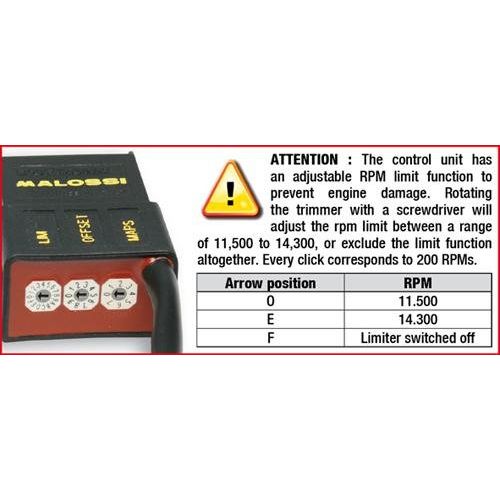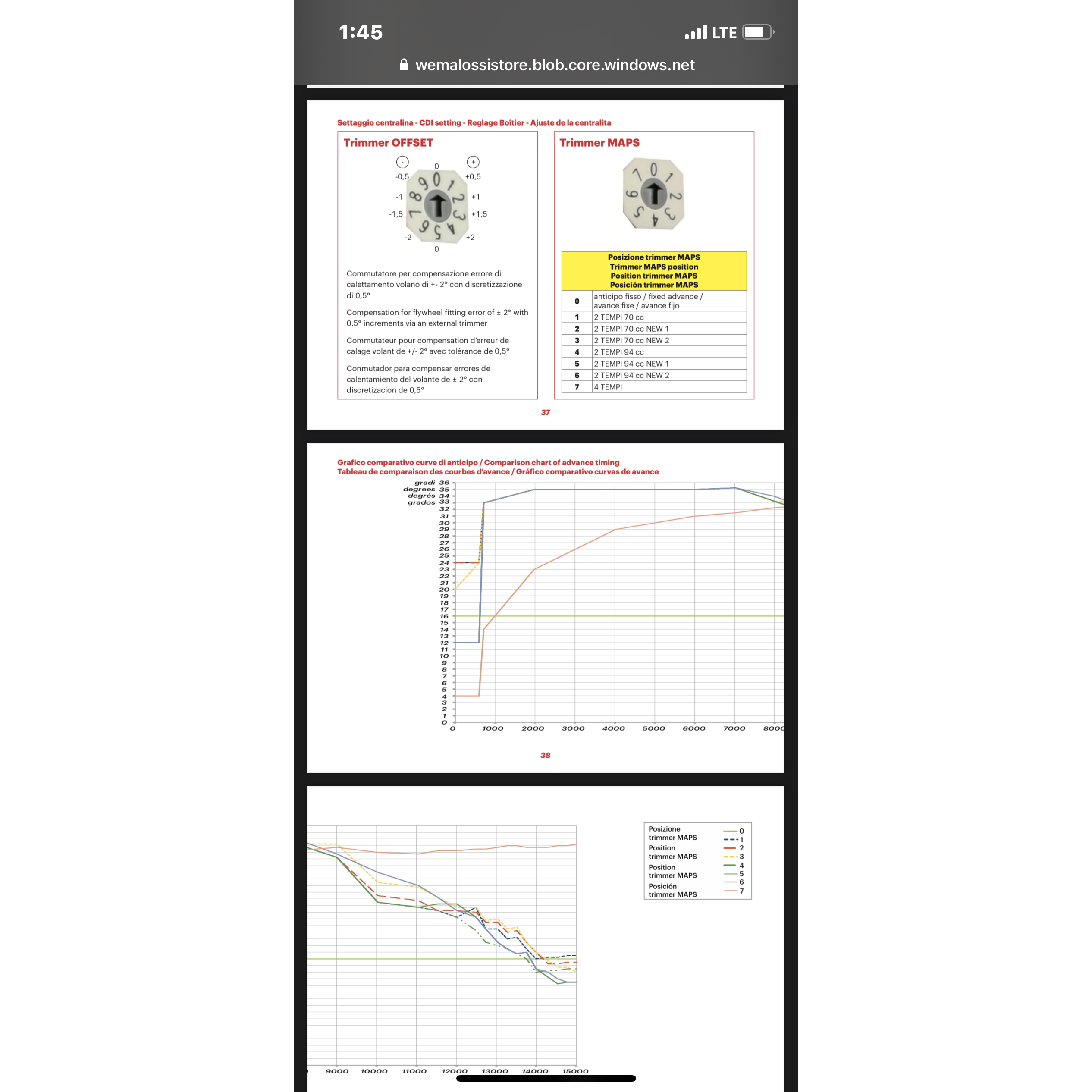Malossi Inner Rotor Ignition - PVL (SMALL TAPER)
CONTACT US TO VERIFY AVAILABILITY
Description
Manages multiple maps simultaneously without having to resort to a hand-held device, with just a simple click. Ability to shift the selected map by moving the OFFSET (± 2°).
The inner rotor ignition systems designed by Malossi are based on the state-of-the-art technology applied to racing. Such a new system resulted from the need to overcome the technical limitations imposed by conventional flywheel ignition, which cannot ensure consistent performance over 10,000 rpm and causes severe setting-up problems for racing vehicles.
We made the control unit even more immune to interferences developing an uP STM8 - 8 bit microprocessor with processing speed of 20MIPS, guaranteeing spark timing with greater accuracy than prior versions!
The MHR Team II includes a not adjustable with 3 trimmers control unit with variable spark advance timing:
- the first trimmer (MAPS) is for selecting the spark advance timing map
- the second trimmer (OFFSET) allows you to shift the selected map ± 2°
- the third trimmer (LIM) used especially for 4-stroke engines, permits you to vary the rev limit between 11.500 RPM to 14.300 RPM and also allows you to disable the rev limiter
It also features 8 preset maps described as follows:
- 1 variable spark advance maps for 4 stroke engines
- 6 variable spark advance maps for 2 stroke engines
- 1 fixed spark advance map
Other essential components have also been revised, such as the high voltage coil, now able to deliver a maximum discharge voltage >40 KV for normal engine speeds from >3000 RPM and an extraordinary ramp up time @10bar> 1750 V/uS.
One of the most important novelties is the new rotor/stator unit, featuring a completely redesigned static component in terms of mechanics and electronics!
The installation instructions graphically illustrate the best spark advance setup for different engines.
Electrical performance improved by 20%. Minimum start-up speed reduced from 450 rpm to 370 rpm.
The effects of this latest evolution translate into increased voltage supplied to the spark plug, at the same speed, which is anything but negligible compared to the previous model.
Tech & Manual
CDI
Control unit with variable spark advance timing and with 3 trimmers:
- trimmer MAPS: selects the spark advance timing map
- trimmer OFFSET: shifts the selected map ± 2°
- trimmer LIM: selects the rev limit (16 possible settings)
8 preset maps:
- 1 variable spark advance maps for 4 stroke engines
- 6 variable spark advance maps for 2 stroke engines
- 1 fixed spark advance map
- System based on a uP STM8 - 8 bit microprocessor with a processing speed of 20MIPS (Million Instructions Per Second).
- Reduced processing time, improved spark advance precision and stability.
- Hardware architecture with improved immunity to interferences.
- Temperature class 105°C cable.
- Compensation for flywheel fitting error of ± 2° with 0.5° increments via an external trimmer
- 8 spark advance tables selectable via an external trimmer
- Vector spark advance tables comprised of 24 breakpoints with linear interpolation.
- Adjustable rev limit via an external trimmer with 16 settings.
- Soft cut feature insures a gradual rev limit cut-off.
- 15 settings to adjust the rev limit between 11,500 RPM and 14,300 RPM with 200 RPM increments plus a setting to disable the rev limiter.

High voltage coil
- Maximum discharge voltage > 40 KV for engine speeds >3000 Rpm
- Maximum peak open-circuit voltage gap > 50KV
- Ramp up time @10bar > 1750V/uS
Rotor-stator unit
- Stator weight reduced by about 30% - total 100g.
- Monolithic high permeability magnetic circuit.
- Optimised magnetic path.
- Strengthening of the wound part, with cable in superior insulation class and increased wire diameter.
- Electrical performance improved by +20%.
- Minimum start-up speed reduced from 450 rpm to 370 rpm.
- Miniaturised impermeable connector with IP67 protection, with retention lock.
- Automotive class cabling.
- Rotor with permanent Neodymium magnets.
WARNING : with this kind of ignition the lighting set is disconnected.

